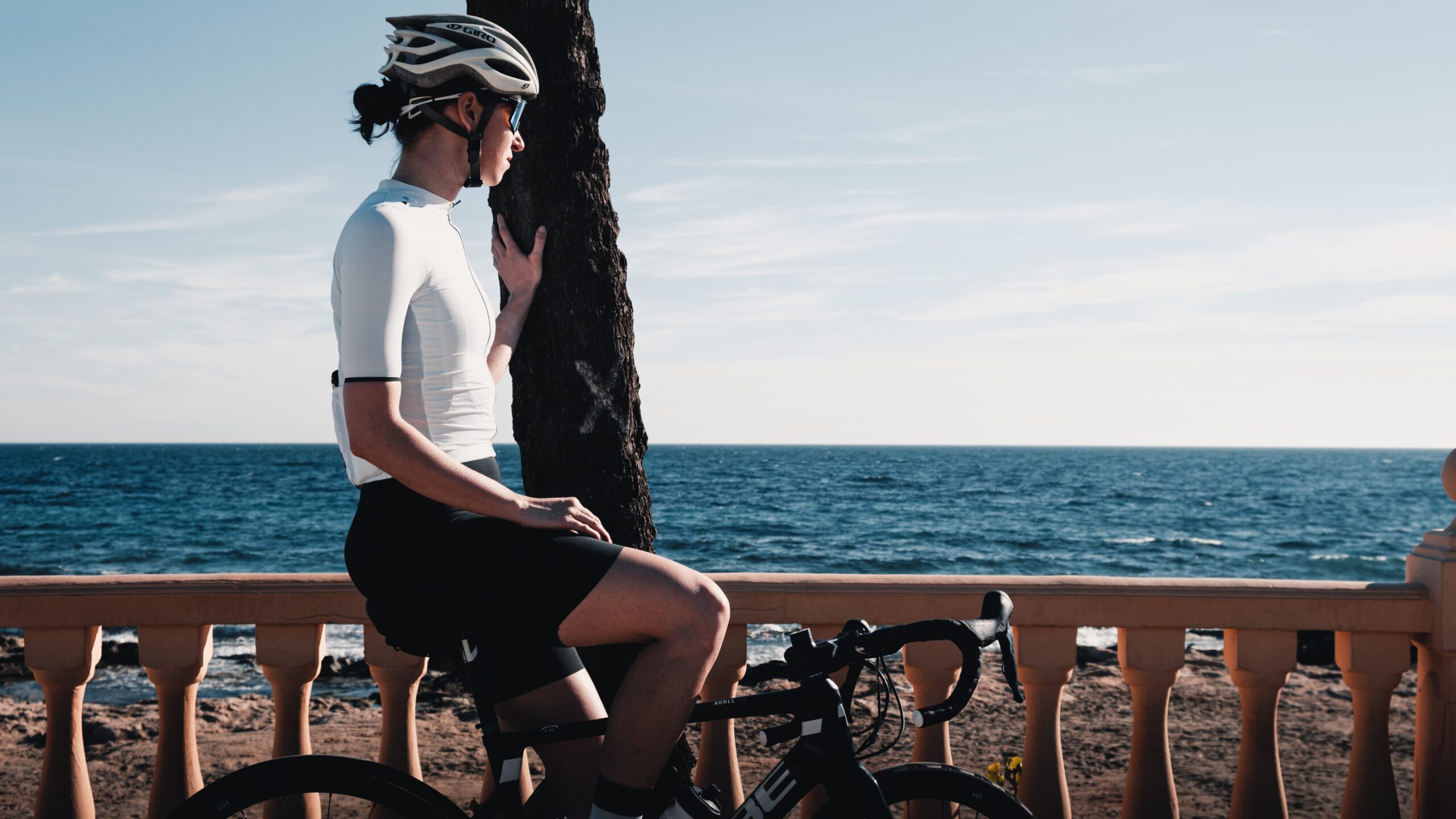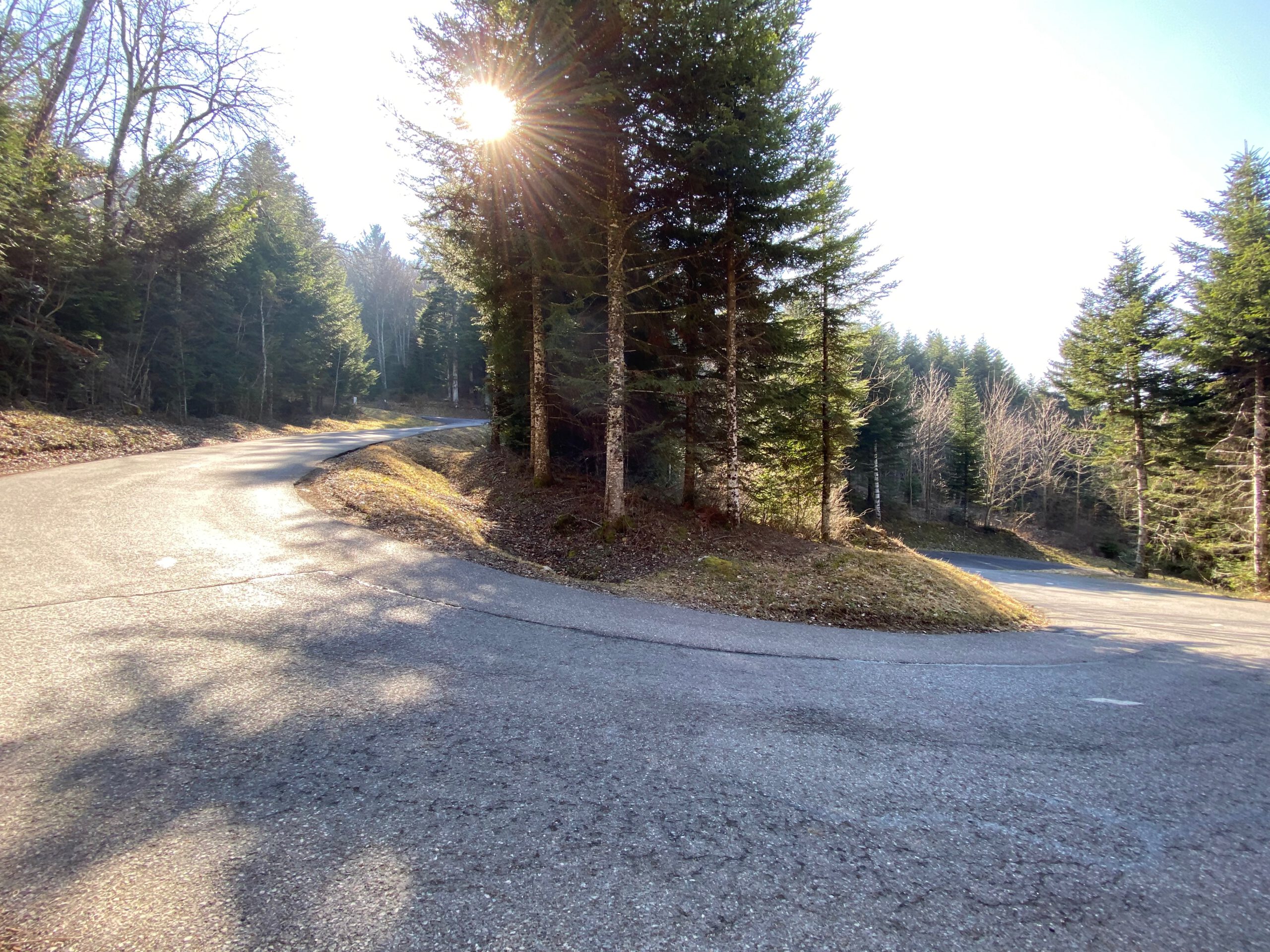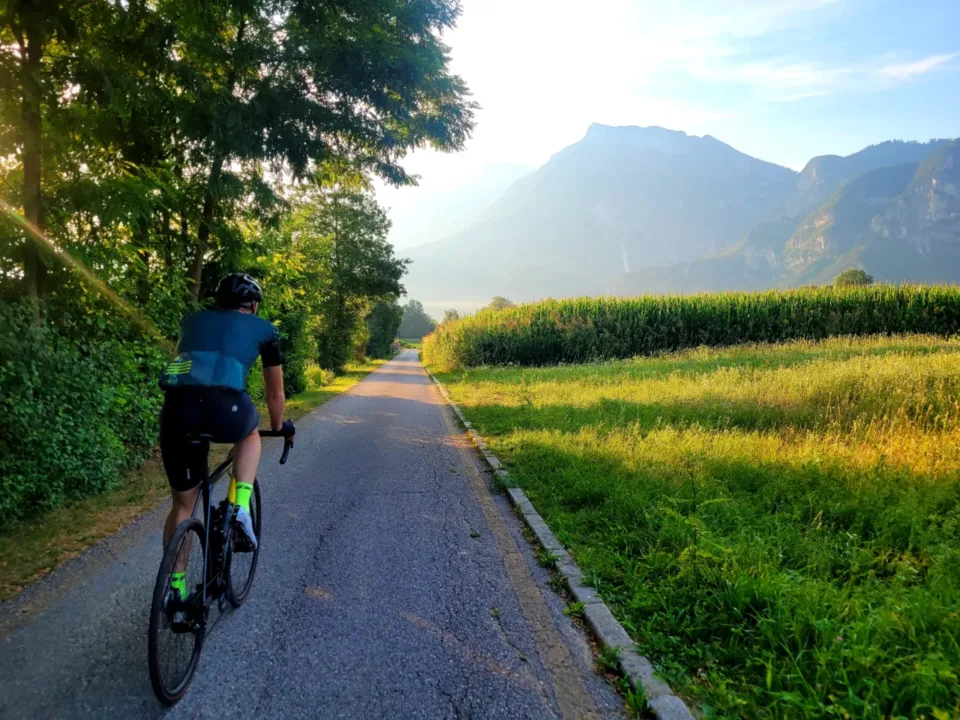Are you going on a cycling holiday soon? But can't manage to cover enough kilometres during the day (in dry conditions)? That is one of the reasons to start training indoors. Especially in autumn and winter, when daylight hours are fewer than in summer, the choice between not cycling or indoor cycling is easy. So you can quickly train indoor in preparation for your next cycling adventure. But what are the benefits of indoor training? And how do you do it? We list a few and also give you some tips for a killer workout.
By: Sander Kolsloot - Photos: Michiel Maas

What do I need?
This article assumes you already have a bike trainer. In a separate article, we explain the choice between different trainers and give you some tips on what to look out for when buying a trainer. Personally, we are very fans of the Wahoo trainers, where The Kickr Core, the entry-level model, is more than enough for many. The key things to look out for are:
- Maximum power. Especially for trained men (and certainly heavier men) an important point.
- The maximum incline angle the trainer can simulate. You won't easily exceed 15% in training. You don't want to train for that either, because it's no fun outdoors either.
- Compatibility with your gear group. If you have an older bike model, your cassette may not fit. Always make sure you have the right connectors with you.
Benefits of Indoor Training in preparation for your cycling adventure
While many cyclists prefer to be outdoors, so do we, it is not inconvenient to train indoors as well
- Weather doesn't matter: One of the main advantages of indoor training is that you are not dependent on the weather. Rain, snow or heat will not mess up your training schedule. Especially if you are going to cycle for a week, good preparation is important.
- Efficiency: Indoor training allows you to start right away and optimise the time spent on your hobby.
- Perfect training: You have full control over variables such as resistance, intensity and duration, ensuring targeted workouts and better results. Outside, you have traffic lights, you might be cycling in a group, your equipment can provide challenges.
- Security: It may sound like an open door, but training indoors is less risky than training outdoors. Especially if you are going for a hard workout, being able to focus on just your effort is very important.
- Consistency: You can stick to a structured training plan, which is essential for good progression in your fitness and strength, and which will make it easier for you to keep it up longer on holiday and get you nice and up the mountains.
- Data analysis: Most indoor trainers have perfect data tracking features, allowing you to monitor and analyse your training data with precision.
- Targeted Workouts: You can tailor your training sessions to specific goals, whether endurance, sprinting or climbing. Especially with the right software, you'll be on your way very quickly.
- Bike on: Say goodbye to traffic lights, stop signs and unexpected stops (and, for example, the risk of cycling in a group); you can fully concentrate on your workout.
- Recovery benefits: Reduced impact on joints and muscles leads to faster recovery, allowing you to train more often and more effectively.
- Community and virtual races: Many indoor training platforms, such as Zwift and Rouvy, for example, offer the opportunity to compete globally with other cyclists, fostering a sense of community and friendly competition.
But which indoor workout is best for me?

Here are some tips for a killer workout. It's helpful if you know what your 'tipping point' is, though. This is the point at which you really start to sour. You can usually figure it out, but it's most useful to do a 20-minute test, where the trainer software will determine your tipping point for you. This will help set up your trainer and ensure that you get maximum results from your rides (even outdoors!) Here at least are some top training sessions that will benefit you anyway:
- Threshold intervals:
- Description: Alternate between high intensity just above your turnover point for 3 to 5 minutes, followed by short recovery (about 1 to 2 minutes). From this, do four to six repetitions.
- Warm up: Start with 10-15 minutes of gentle cycling to warm up your muscles.
- Cycling out: Important to also do a cool-down. Do this with 10 minutes of gentle cycling to gradually lower your heart rate.
- Sweet Spot Training:
- Description: This workout has you cycling just below your tipping point for 20 to 40 minutes. Repeat 2 to 3 times with short 5-minute breaks. You'll find that it gets easier to keep this up each time. A sign that you are improving your fitness
- Warm up: Start with 15 minutes of gentle cycling in and occasional sprints to warm up and increase intensity.
- Cycling out: Finish with 10 minutes of gentle cycling.
- VO2 Max Intervals:
- Description: VO2 max intervals are really tough, but have very good results. Perform 5 to 6 repetitions of short, intense efforts of 1 to 2 minutes, followed by 2 minutes of gentle pedalling. Many software programmes like Zwift and Rouvy already have this workout programmed in.
- Warm-up: Start with 10-15 minutes of gentle cycling, including a few short gears.
- Cycling out: Finish with 10 minutes of gentle cycling.
- Endurance training:
- Description: This is booth washer, long progamma. Grab your laptop with your favourite Netflix or HBO series and go for a paddle. In zone 1 or zone 2 of your heart rate zones and go. Do this at an even pace for 1 to 2 hours. Aim to improve your endurance. Make sure you get out of the saddle from time to time, because you'll be a pain in the butt. Guaranteed.
- Warm up: Even in a gentle workout, a warm-up is important. Start with 10 minutes of gentle cycling.
- Cycling out: Finish with 10-15 minutes of gentle cycling.
- Tabata Intervals:
- Description: This is another killer workout. You do 8 reps at near maximum level for a duration of 20 seconds, followed by 10 seconds of gentle kicks. Once you've done this 8 times, you're done. 4 minutes! Yes that's your workout, but then you're really working on your power.
- Warm-up: Start with 10-15 minutes of gentle cycling and a few short gears.
- Cycling out: Finish with 10 minutes of gentle cycling.
- Hill reps:
- Description: This is a well-known cycling workout. Repeating or simulating climbs will make you ride better uphill. You do 6 to 8 repetitions out where the resistance gets higher and, not unimportantly, you keep a LOW (i.e. below 70 RPM) cadence for 3 to 5 minutes. In between each repetition, take recovery with 2 to 3 minutes of gentle pedalling.
- Warm up: Start with 10-15 minutes of gentle cycling.
- Cycling out: Finish with 10 minutes of gentle cycling.
- Over-Under Intervals:
- Description: Again, you're going to work on raising your threshold and training your body to properly eliminate lactate. It's best to do two 10-minute intervals, where you ride 4 minutes below your tipping point, then 1 minute above and then again 4 minutes below, 1 minute above. Take 5 minutes of rest between intervals (pedalling slowly). ALs this eventually goes easily you can increase the number of 10-minute intervals, to, say, 4x.
- Warm-up: Start with 15 minutes of moderate cycling and gradually increase the intensity.
- Cycling out: Finish with 10 minutes of gentle cycling.

What software can I use?
Obviously, if you are going to train indoors in preparation for your outdoor season or your cycling adventure, good software is indispensable. Fortunately, several options for training have come along in recent years. The most important one of all has even become a verb: 'Zwiften'. Here we describe a number of platforms you can use
- ZWIFT: The benchmark when it comes to indoor training. You cycle in all kinds of virtual worlds and you can do workouts, just ride laps or compete in races. There are social rides, clubs, meetups and much more. This costs €14.99 per month, excluding all materials such as trainer and ANT+ receiver
- ROUVY: This Zwift challenger mainly stands out in terms of the virtual world. If you are really looking to cycle a real route. This is because the software uses imagery from the real world. So if you are training for say the Mont Ventoux or Alpe d'Huzes, then this is the best option. For $14.99 per month, you are an individual member, for 19.99 as a couple and for clubs it is only $32.99 (!)
- MyWhoosh: This is another Zwift challenger, but this one uses virtual worlds. They also sponsor the World Indoor Cycling Championships, organised by the UCI. This indoor cycling simulator is originally from the United Arab Emirates and therefore has a number of virtual worlds based on it, such as AlUla (in Saudi Arabia) . Big advantage? The app is FREE!






